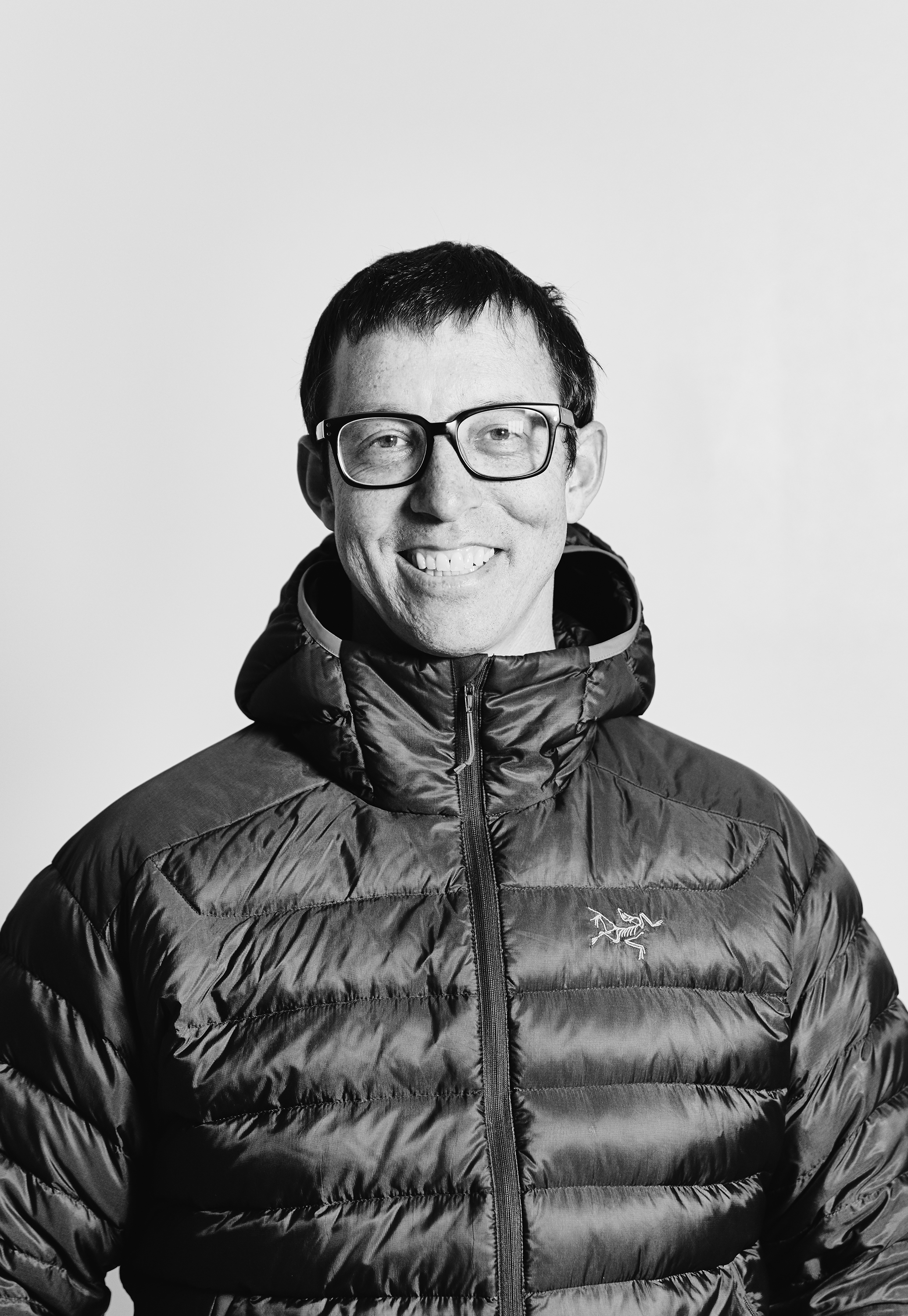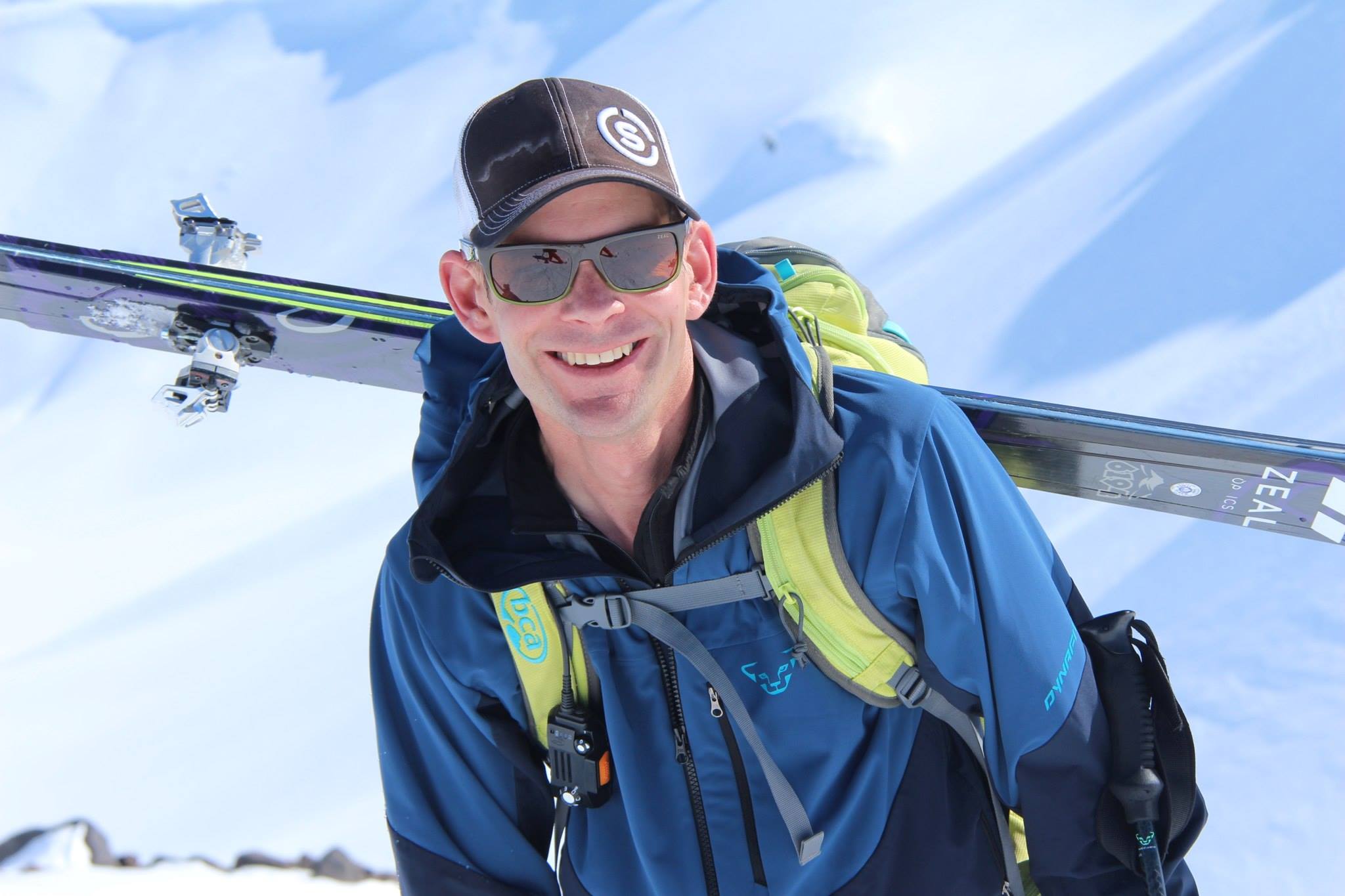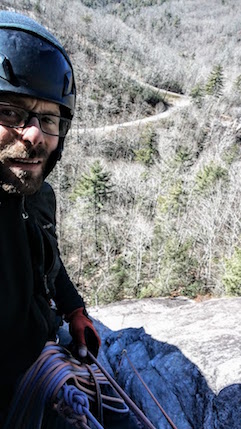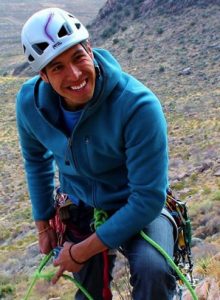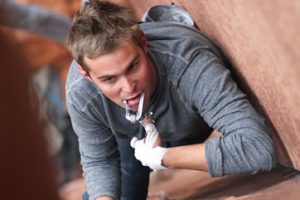What it takes: the Alpine Guide Course, 1st in the Alpine Discipline
 By Andy Hansen, recipient of the Five Ten Scholarship
By Andy Hansen, recipient of the Five Ten Scholarship
Last month I was fortunate enough to be able to participate in the AMGA’s Alpine Guide Course in Boulder, Colorado. I was also fortunate enough to have been awarded a Five Ten Scholarship, which partially funded the course. The course is the first in the Alpine discipline and lays the foundation in order to complete the Advanced Guides course and Alpine Guides Exam. Some of the Rock Discipline courses are prerequisite for the AGC to ensure all participants are up to speed regarding technical systems, climbing ability, and knowledge of guiding practices that are standard in the industry. After meeting and completing all prerequisites for this course I was on my way to completing the first step in the Alpine Discipline and couldn’t have been more excited to take it in my hometown.
The course started out with a half-day indoor “classroom” session covering basic technical skills such as navigation, route planning, and gear selection. Considering alpine terrain is some of the more complex terrain to guide in, knowledge in these areas is paramount and integral to successful guiding. After a few hours sitting inside we were all anxious to get out and do some short-roping in Eldorado Canyon. We congregated at the base of the Quartzite Ridge, teamed up, and off we went short-roping on the jagged and complex Ridge. Short-roping is one of the most commonly used techniques when traveling through rugged, broken or exposed terrain where a “long-roping” strategy is unnecessary and perhaps dangerous. As alpine guides we rely heavily on this mode of travel and being confident with this skill set is critical to maintaining security in the mountains. Practice makes perfect and over the duration of the course, we practiced constantly.
The following days found us in and around some of Boulder’s most highly recognizable terrain practicing the techniques our instructors demonstrated to us. We practiced technical transitions (short-roping to rappelling, rappelling to short-roping, long-roping to short-roping, etc.) on Eldorado Canyon’s East Slabs and toured some of Eldo’s more “famous” descents including the East Slabs, Vertigo Rappels, Chockstone Rappels, and the complex Rewritten Descent. On another day we went up (and down) the 1st and 2nd Flatirons, the Flatironette, and the North Ridge of the 1st Flatiron. These features provided ideal terrain in which to practice some of the newer techniques we had just learned from our elite team of instructors. But after a few days of this we were all psyched to be able to head up into the Park and apply these techniques in the big hills.
Our first day up in the breathtakingly beautiful Rocky Mountain National Park allowed us to participate in “snow school” and go over the basics of glacier travel and crevasse rescue systems. The crevasse rescue systems were not necessarily new techniques but revisions of older techniques we had all learned during the Rock Guide Course. After being rained out in the high country and the impending threat of a lightning strike made us all very fearful, we regrouped in Estes Park and organized for our alpine assignments the following day.
For our alpine guiding assignments our groups split into two smaller, more manageable teams in order to successfully guide both the Spiral Route (5.6, II) and Dreamweaver (M1-2 WI2, III) the following days. I had never climbed the Spiral Route before but analyzing the route through a different set of eyes (with a guiding mindset) turned the innocent 5.6 route into a more hazardous objective. But with careful risk assessment, tour planning, route finding, and risk management the route turned into a very valuable guiding objective. When there was one person out on point (we took turns guiding) it provided each of us with an opportunity to view different personal strategies for guiding a route of this magnitude. Not always being in the guide role is just as important as guiding the route yourself. After completing the “up” portion of the route, we needed to make our way down the route. Initially the rappels off the summit block were straightforward and worry free. But when we peered into the descent couloir and noticed it was capped by an ominous looking cornice, our descent options became limited and more complex. But with the training we had previously acquired on the course, we navigated through tricky terrain by way of impromptu rappels, lowers and down-climbing. We had successfully guided up and down a prominent feature in Rocky Mountain National Park- most of us onsight.
The following day another 1AM wake up and a 245AM start time at the Long’s Peak Trailhead delivered us to the base of one of RMNP’s most classic routes, Dreamweaver, on the Northeast Face of Mt. Meeker. I had climbed the route once before and offered to pace the group into Chasm View Cirque. After gaining the cirque and reveling in the alpenglow we made our way to the long, narrow stretch of snow to the left of the Flying Buttress.
Steep snow climbing led to a few narrow sections of mixed climbing and the upper pitches included some quality alpine ice-like snow. The route was in great condition and although we didn’t summit (we had decided to descend the route as opposed to the traditional descent via the Loft Bypass) we managed to climb a classic route in great conditions. I guided down the route and as difficult as I thought it would be, with the new techniques acquired, tricky sections of the descent proved to be not all that difficult. Many lowers, rappels, down-climbing, short-roping and plunge stepping were involved to get us to the base of the 1,500′ route safely. Upon reaching the base of the route we all breathed a sigh of joy as we had essentially completed the 9-day Alpine Guide Course- a truly monumental moment in our careers as guides.
Though not the most technically demanding course, I feel as though this course provided me with a turning point in emotional maturity as a guide. There is a lot of fortitude, patience, and gusto required in this style of guiding. The days are long and the challenges of terrain, weather and conditions complex but in the end, perseverance and careful decision making lead to rewards much greater than I had known before. The future seems to hold rewards unimaginable at this point but with the foundations laid out for a promising future as an alpine guide, I can afford to imagine that some great gift awaits.
I would like to take this opportunity now to thank Five Ten, the AMGA, Marc Chavuin, Silas Rossi, Larry Goldie, Mike Poborsky, and all the other participants of this course. They provided me with a profound and truly wonderful learning experience.





